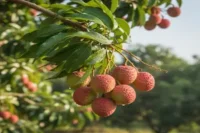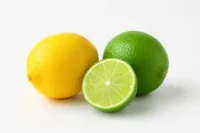The Ultimate Guide to Growing Heirloom Tomatoes Successfully
Published: 6 Mar 2024
Heirloom tomatoes, cherished for their rich flavors and diverse characteristics, are not merely a culinary delight but a horticultural legacy passed down through the ages. With over 15,000 known varieties and roughly 3,000 still cultivated, these open-pollinated tomatoes are symbols of tradition, packed with higher sugar content and a spectrum of shapes, sizes, and hues. Heirloom tomatoes have evaded selective breeding, unlike their hybrid counterparts, remaining true to their ancestral traits. As I explore the allure of cultivating these historical gems, I acknowledge their critical role in preserving crop diversity amid modern agricultural practices.
In this ultimate guide, I aim to share the wisdom of successfully growing heirloom tomatoes, from understanding their background to handpicking the finest varieties for your garden. I’ll provide concrete cultivation tips emphasizing organic approaches and addressing common challenges, ensuring your tomatoes thrive. Moreover, we’ll transition from garden to table, celebrating the superior flavor of these treasures. Get ready to immerse yourself in a world where every tomato tells a story, and planting a seed is an act of conservation.

Understanding Heirloom Tomatoes
Heirloom tomatoes are a treasure trove of diversity in the world of gardening. They are not just plants but a heritage that carries the flavors and stories of the past. I’ve always been fascinated by the colors, shapes, and flavors these tomatoes bring to my kitchen. Let me share what I’ve learned about these wonderful varieties:
· Open-Pollinated Varieties: Heirloom tomatoes are celebrated for their genetic purity. This means they can reproduce true to type from their seeds, preserving their distinctiveness.
· Flavor and Diversity: The rich flavors of heirloom tomatoes result from selective breeding over time. Each variety has been nurtured for its specific characteristics and adaptability to local climates. This selective breeding has led to a broader spectrum of tastes than in standard supermarket tomatoes.
· Visual Distinctiveness: Unlike the uniform reds of their hybrid counterparts, heirloom tomatoes can be purple, pink, orange, yellow, or even green when ripe. They can be small, round, large, lobed, or any shape. This visual diversity is part of their appeal and can be a delightful surprise in the garden or on the plate.
However, it’s not all about the looks and taste. Growing heirloom tomatoes comes with its own set of challenges:
· Delicate Nature: These tomatoes may have thinner skins and irregular shapes, making them less suitable for long-distance shipping. Their unique attributes often mean they are less resistant to diseases compared to hybrids and typically have a shorter shelf life.
· Categories of Heirlooms: There are four main categories of heirloom tomatoes, each with its own story:
·
1. Family Heirlooms: Passed down through family generations.
2. Commercial Heirlooms: Older varieties that were once commercially available.
3. Created Heirlooms: Resulting from deliberate cross-breeding of heirlooms or hybrids.
4. Mystery Heirlooms: Those with an unknown origin are still cherished for their unique qualities.
· Popular Varieties: Some of the well-loved varieties among gardeners include the Brandywine, known for its large, pink fruits, and the Cherokee Purple, with its deep, rich flavors.
Understanding the characteristics of heirloom tomatoes is crucial for any gardener who wishes to explore their cultivation. They are not just plants; they are a connection to our agricultural heritage and a reminder of the importance of biodiversity. As I delve into the world of heirloom tomatoes, I am constantly reminded of the joy and satisfaction of growing these historical gems.
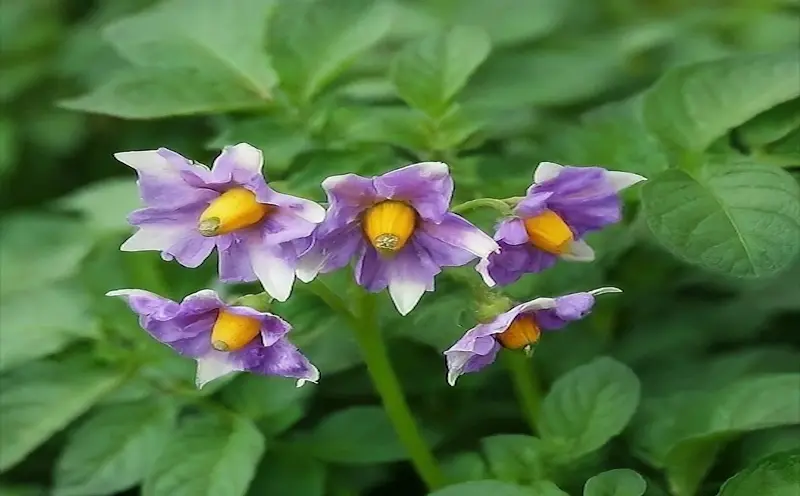
Varieties of Heirloom Tomatoes
As I delve deeper into the world of heirloom tomatoes, I am struck by the sheer variety available to the enthusiastic gardener. Here’s a glimpse into the diversity of these flavorful and colorful fruits:
· Arkansas Traveler: This variety is known for its resistance to disease and indeterminate growth, producing fruit throughout the growing season. Its pinkish-red tomatoes are appealing to the eye and bring a delightful taste to the table.
· Aunt Ginny’s Purple: A tomato that boasts a deep, rich flavor that is a favorite among many. The large fruits offer a beautiful purple hue that adds color to any dish.
· Black Krim: Originating from Russia, this variety is recognized for its dark, almost black fruits that deliver a unique smoky flavor. It’s an indeterminate variety, ensuring a steady harvest.
Tomato enthusiasts will appreciate the vast array of shapes and sizes heirloom tomatoes come in, such as:
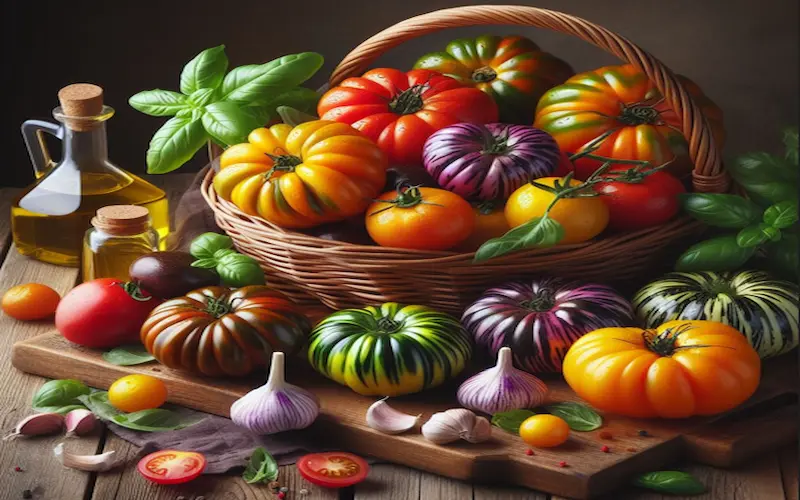
· Currant and Cherry: These tiny tomatoes are perfect for snacking or adding flavor to salads. Despite their small size, they pack a punch in terms of taste.
· Plum: Known for their firmer flesh, plum tomatoes are ideal for sauces and pastes due to their lower moisture content.
· Globe: A classic tomato shape, these are versatile and can be used in almost any dish.
· Oxheart: As the name suggests, these tomatoes are heart-shaped and have a meaty texture, making them great for slicing.
· Beefsteak: The giants of the tomato world, beefsteak varieties are perfect for a classic tomato sandwich or a hearty burger topping.
With over 850 varieties https://www.marysheirloomseeds.com/collections/heirloom-tomatoes offered by Mary’s Heirloom Seeds alone, the categorization into types like beefsteak, cherry, and determinate showcases the diversity within heirloom tomatoes. This immense variety allows gardeners to select tomatoes that suit their flavor preferences and their gardening style.
The flavor profiles of heirloom tomatoes are as varied as their appearances:
· Pink Tomatoes: Varieties like Brandywine and Cherokee Purple are celebrated for their sweet, rich flavors that perfectly balance sweetness and acidity.
· Black/Dark Purple Tomatoes: Cultivars such as Paul Robeson and Black Krim are prized for their complex, smoky flavors that add depth to any culinary creation.
· Red Tomatoes: Staples like Costoluto and Aussie are the go-to for that robust, classic tomato taste, making them a versatile choice in the kitchen.
· Striped/Bi-Colored Tomatoes: Gold Medal and Green Zebra not only tantalize the taste buds with unique flavors but also add a pop of color to dishes.
· Orange and Yellow Tomatoes: Varieties such as Persimmon and Kellogg’s Breakfast are noted for their sweetness and meaty flesh, perfect for a fresh tomato salad.
· White Tomatoes: For those seeking a milder taste, White Tomesol and Great White offer a creamy flavor that differs from the more common red varieties.
· Green Tomatoes: Aunt Ruby’s Green and Green Zebra stand out with their bright, tangy flavors and are a visual treat in any garden or plate.
The beauty of heirloom tomatoes lies in their ability to offer something for every palate and purpose. Whether you’re looking for tomatoes to eat fresh, cook with, or admire in your garden, the heirloom varieties provide many options. As I continue to explore and grow these historical gems, I am reminded of the importance of preserving the rich tapestry of flavors and stories they represent in our gardens and on our plates.
Cultivation Tips for Heirloom Tomatoes
As I’ve grown heirloom tomatoes over the years, I’ve gathered key cultivation tips for anyone looking to nurture these plants successfully. Here’s what has worked well for me:
· Selecting the Right Varieties: It’s crucial to pick heirloom tomato varieties well-suited to your region’s growing conditions. This ensures that the plants can thrive and produce the best possible fruit. For example, if you live in a region with a short growing season, look for varieties that mature quickly.
· Soil Preparation: I always enrich the beds with compost before planting. This practice has significantly improved the soil quality and, in turn, the health and yield of my tomato plants. Well-prepared soil is the foundation of a successful heirloom tomato garden.
· Planting Techniques:
·
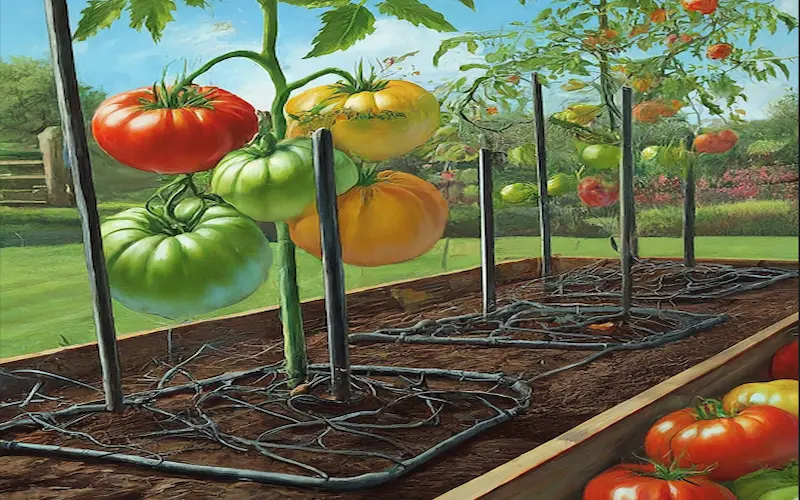
· Staking: I stake my plants right after planting to provide support as they grow. This helps prevent the branches from breaking under the weight of the fruit.
· Mulching: Applying mulch beneath the plants helps retain soil moisture and regulates temperature, particularly during hot spells.
· Watering: Consistent watering is key. I avoid letting the soil dry out completely, which can lead to problems like blossom end rot.
· Pruning and Support:
·
· Pruning: Regularly trimming the plants, particularly the suckers that sprout from the joints between branches, can improve airflow and encourage more fruit production.
· Support Structures: Using trellises, cages, or stakes is essential, especially for indeterminate varieties that can grow tall and heavy with fruit.
· Sunlight and Soil Requirements: Heirloom tomatoes need at least eight hours of sunlight daily. They prefer fertile soil rich in organic matter and well-draining. I test the soil pH, aiming for a range of 5.8-6.8.
· Companion Planting: I’ve found that planting heirloom tomatoes alongside carrots, onions, and chives can be beneficial. These companions help deter pests and diseases, common challenges when growing heirlooms.
· Propagation from Seeds: One of the joys of heirloom tomatoes is the ability to save seeds from one year to the next. This allows me to maintain my favorite varieties and enjoy their unique flavors every season.
· Climate Considerations: When growing heirloom tomatoes from seeds or transplants, it’s imperative to consider the local climate. I ensure that the plants are placed in well-drained soil and keep the soil consistently moist without waterlogging.
· Mulching for Heat: A good layer of mulch is indispensable in hot climates. It keeps the roots cool and helps prevent the soil from drying out too quickly.
· Potting Requirements: For those growing heirloom tomatoes in containers, I recommend using at least an 18-inch diameter pot for bush types and a 24-inch pot for indeterminate types. Potted plants require more frequent watering due to their limited soil volume.
· Staking and Trellising: I can’t stress enough the importance of supporting heirloom tomato plants. They need to be staked, caged, or trellised to help bear the weight of the fruit and improve air circulation around the foliage.
· Intended Use: When selecting heirloom tomato varieties, consider their end use—for fresh salads, slicing, making paste, or for early or late-season harvests. This helps plan the garden and ensure a steady supply of tomatoes throughout the growing season.
By following these tips and paying attention to the unique needs of heirloom tomatoes, I’ve enjoyed bountiful harvests year after year. Whether you’re an experienced gardener or just starting, these guidelines can help you grow heirloom tomatoes successfully. Remember, each variety has its personality and preferences, so don’t be afraid to experiment and find what works best for you and your garden.
Common Challenges and Solutions
Growing heirloom tomatoes can be immensely rewarding, but it’s manageable. Here are some common issues I’ve encountered, along with effective solutions:
· Pests and Diseases:
·
· Tomato Hornworms: These large caterpillars can quickly strip a plant of its leaves. Regularly inspecting plants and handpicking these pests is an effective control method.
· Aphids: These tiny insects cluster on the undersides of leaves, sucking the sap and weakening plants. A strong spray of water or applying neem oil insecticides can keep them at bay.
· Flea Beetles: Small and jumpy, these beetles chew holes in the leaves. Using row covers or diatomaceous earth can help control their population.
· Bacterial Wilt, Early Blight, Late Blight, and Fusarium Wilt: These diseases can be devastating. Proper crop rotation, removing affected plants, and using disease-resistant varieties are crucial steps in prevention and management.
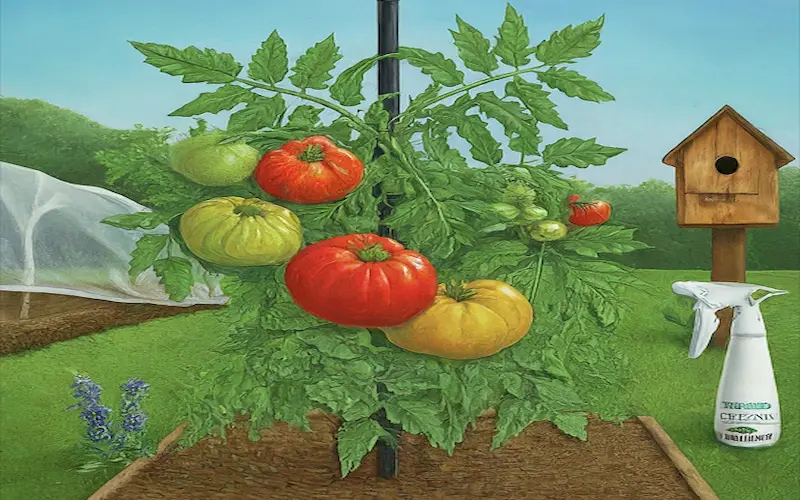
· Nutrient and Water-Related Issues:
·
· Blossom End Rot: This condition manifests as a dark, rotten spot at the bottom of the fruit, often due to calcium deficiency or inconsistent watering. To combat this, ensure even watering and consider adding lime and gypsum to the soil if tests show a calcium deficiency.
· Blossom Drop: Fluctuations in temperature, water stress, or lack of pollination can cause flowers to drop before setting fruit. To prevent this, maintain consistent watering and consider using a fertilizer formulated for tomatoes to encourage healthy growth and fruit set.
· Physical Plant Issues:
·
· Fruit Cracks: Caused by rapid growth due to hot, rainy weather and uneven watering. The key is to water evenly during the growing season to prevent sudden changes in the fruit’s growth rate.
· Sunscald: The sun’s intense rays can scald developing tomatoes, leading to pale, leathery patches on the fruit. Using tomato cages or a wire support system can provide shade and protection for the fruit.
· Pollination and Growth Issues:
·
· Poor Fruit Set: Over-fertilization with nitrogen, overcrowding, or inadequate pollination can lead to poor fruit development. Testing the soil, spacing plants appropriately, and gently shaking flowering branches can improve pollination and fruit set.
· Catfacing: This deformity is often caused by cool temperatures during pollination. Delaying planting until warmer weather can minimize the risk.
· Leaf Roll: High temperatures, wet soil, and over-pruning can cause leaves to roll inward. Avoid over-pruning and ensure that the soil has proper drainage to prevent this issue.
· Puffiness: Under-fertilization or inadequate pollination can lead to puffy, hollow fruit. Ensuring proper fertilization and pollination can resolve this problem.
I’ve kept my heirloom tomatoes healthy and productive by staying vigilant and implementing these solutions. Remember, each tomato variety may have specific needs, so observing and adapting your care is important.
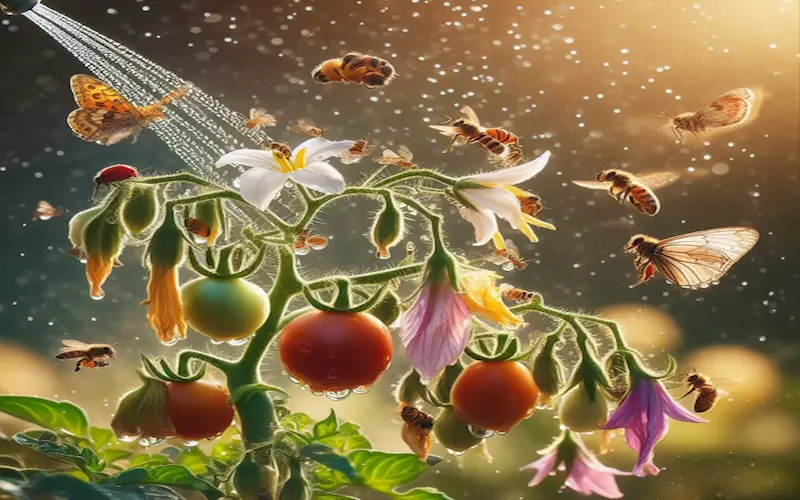
From Garden to Table
Bringing your heirloom tomatoes from the garden to your table is a journey that culminates in a celebration of taste and color. Here’s how to ensure that your tomatoes maintain their unique heirloom quality on your plate:
· Harvesting Tips:
·
5. Wait for a Dry Day: Harvest your tomatoes on a dry day to prevent moisture from affecting their exquisite taste.
6. Ripeness is Key: Pick your heirloom tomatoes when they’re fully ripe, as they will continue to ripen even after being picked. This ensures that you’re enjoying them at their flavor peak.
7. Prevent Cracking: To avoid cracking, harvest your tomatoes just before their color reaches its peak. This timing is crucial for maintaining the integrity of the fruit.
· In the Kitchen:
·
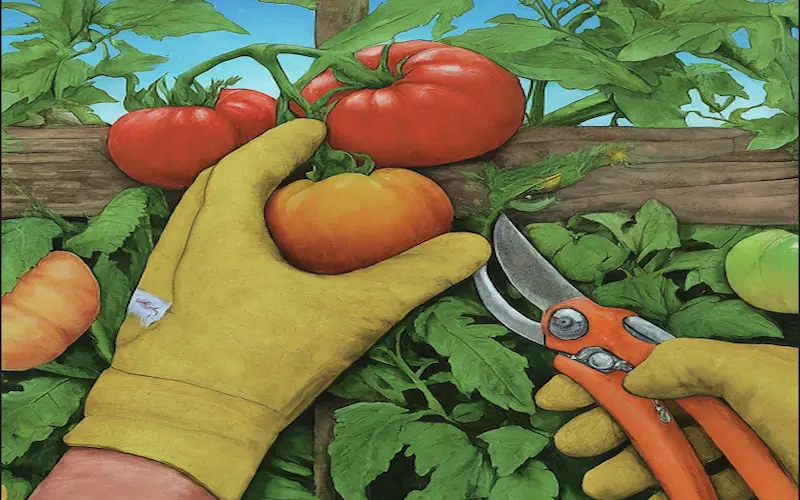
· Simple Salads: Showcase the natural flavor of your heirloom tomatoes in a simple salad, perhaps accompanied by lemony ricotta and a sprinkle of savory granola for an added crunch.
· Portuguese-Inspired: Combine your heirloom tomatoes with tuna confit for a salad with a unique twist on traditional flavors.
· Summer Refreshment: Pair your tomatoes with nectarines and whipped feta for a dish that epitomizes the freshness of summer.
· Fish Tacos: Elevate your fish tacos with a fresh heirloom tomato salsa, adding a burst of heirloom flavor that complements the striped bass perfectly.
· Sophisticated Serving: Serve your heirloom tomatoes on Parmesan tuiles, drizzled with olive oil and herbs for a dish that’s as elegant as it is delicious.
· Versatile Cooking Solutions:
·
· Quick Roasting: For a quick and versatile use of surplus tomatoes, try roasting them. They can then be served over pasta, on sourdough toast with burrata, mixed with white beans over grains, tossed into salads, or added to gnocchi recipes and quiches.
· Marinated Magic: Marinate your heirloom tomatoes with olive oil, red wine vinegar, fresh garlic, and oregano to create a flavorful topping for salads or sandwiches.
· Heirloom Variety in Recipes: Get creative with recipes like heirloom tomato soup, gazpacho, grilled bruschetta, or even a tomato and avocado toast to showcase the diversity of your garden’s harvest.
Using these tips and incorporating heirloom tomatoes into your cooking will enhance your meals and honor the rich heritage of these garden jewels. Enjoy the fruits of your labor and the burst of flavors they bring to every dish.
What are the best practices for cultivating heirloom tomatoes?
To successfully cultivate heirloom tomatoes, it’s crucial to prune them regularly, as they are typically robust, indeterminate plants. Specifically, you should remove the “suckers” that sprout from the angles between the leaves and the main stem. This practice enhances airflow around the plants, which prevents leaf-related diseases.
What challenges might I face when growing heirloom tomatoes?
Heirloom tomatoes present certain challenges as they tend to have less resistance to diseases and pests than hybrid varieties, often bred for greater disease resistance. Additionally, heirloom tomatoes display more fruit size, shape, and flavor variation, whereas hybrid tomatoes are generally more consistent.
How long does it take for heirloom tomatoes to mature?
The time from planting to harvesting ripe heirloom tomatoes can vary, typically ranging from 65 to 95 days after transplanting, depending on the specific variety and the conditions of the growing season. It’s important to wait for heirloom tomatoes to fully ripen before picking them, although identifying the ripe stage may be more complex than hybrid tomato varieties.
Do heirloom tomatoes have specific watering requirements?
Heirloom tomatoes grown in containers require more frequent watering and fertilization than those planted in the ground, as the soil in pots can dry out quickly. Since tomatoes need about 6 to 8 hours of sunlight daily, monitoring and meeting their water needs is essential.
Conclusion
The journey from soil to table with heirloom tomatoes is a cherished process, steeped in tradition and flavored with the anticipation of harvest. We have traversed the path from selecting the most fitting varieties to addressing the challenges of cultivating these garden treasures. Their rich tapestry of flavors and histories embellishes our meals and connects us to our agricultural heritage, reminding us of the importance of preserving biodiversity in our backyards. Whether nestled in a vibrant salad or roasted to perfection, heirloom tomatoes promise an escapade of taste. As you relish the fruits of your labor, remember that the legacy of heirloom tomatoes continues with each seed saved and every story shared around the dining table. If you’re eager to dive into the world of heirlooms and taste these ancient flavors, explore heirloom seeds at https://www.marysheirloomseeds.com/collections/heirloom-tomatoes to start your garden legacy.

- Be Respectful
- Stay Relevant
- Stay Positive
- True Feedback
- Encourage Discussion
- Avoid Spamming
- No Fake News
- Don't Copy-Paste
- No Personal Attacks



- Be Respectful
- Stay Relevant
- Stay Positive
- True Feedback
- Encourage Discussion
- Avoid Spamming
- No Fake News
- Don't Copy-Paste
- No Personal Attacks

